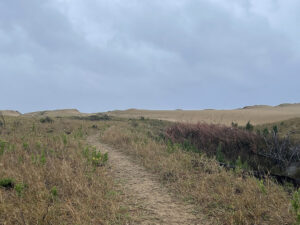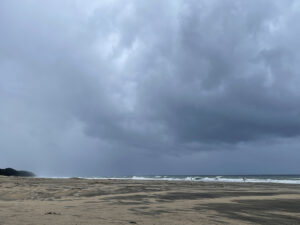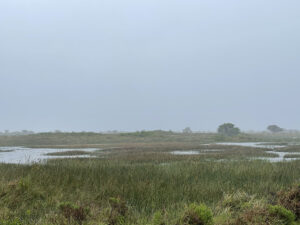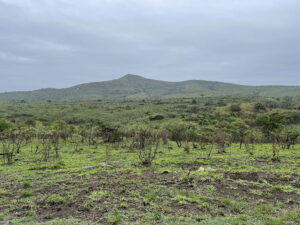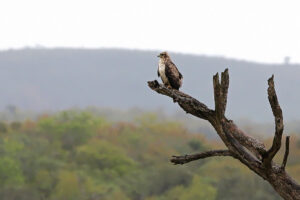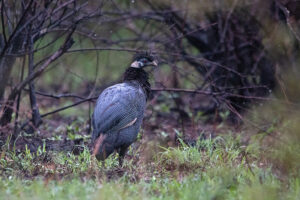St Lucia
The weather report ahead of my trip did not look promising – a lot of rain was predicted. It was heavily overcast when I arrived, but dry. It would not last long. I went for a short drive.
If it wasn’t for the white waves, I may have missed the fact that there was an ocean out there!
I am sure the view from Sunset Jetty would be fantastic on a sunny day, but today there was not much of a sunset. 
I saw my first lifer of the trip – a pair of Black-bellied Starlings were chasing each other through the trees. No photo unfortunately, Just outside iSimangaliso I found a small group of Crested Guineafowl. 
It was getting darker and I decided to find a place for supper and to watch the Springboks play in the Rugby World Cup Final. After a stressfull, nail-biting 80 minutes, the Bokke were victorious – they won! Only the second time a team has defended its title. And the Springboks are the only side in world rugby that has never lost a final.It was a tremendous evening!
The rain started in earnest during dinner and continued all through the night and into the next morning.
When I woke up I decided to go for a drive anyway – I may not see a lot due to the rain, but I was guaranteed to see nothing if I stay inside. I went for a walk in the rain on te boardwalk. The sign at the entrance was comforting! The rain was not fun, but I managed another lifer in the form of a Brown Scrub Robin.
As I drove back the rain stopped for a few minutes. I opened the window and heard some birds call. I got out and saw my second lifer – a Square-tailed Drongo. There were some smaller birds flitting about in the undergrowth. As I turned back to my car I saw a bird fly across the road. I nearly squealed – it was a Green Malkoha! It was a bird very high on my wish list, but I never thought I would find this bird! I looked at it with the binoculars – it was gorgeous. I grabbed my camera from the car but the bird disappeared into the thicket. I did not get a photo, but I was ecstatic to have seen it!
Four Trumpeter Hornbills landed in the trees nearby. They were rather wet.
A wet Yellow-billed Kite had found some breakfast.
The view from the beach on Sunday afternoon was rather moody. It improved slightly the next day.
The accommodation where I stayed had a fabuloous garden. I was told that I may even expect hippos at night as the property bordered a part of the estuary. Unfortunately they did not visit while I was there. When there were small breaks in the rain I would wander around the garden. I found a cute little velvet spider, and many Giant African Land Snails.
I may not have seen the hippos on the in the garden, but I did run into a little troop of Banded Mongoose on the lawn. A few Vervet Monkeys were sitting on the roof.
There were also lots of birds in the garden – Bulbuls, White-eared Barbets, White-eyes, African Flycatchers as well as both Crowned and Trumpeter Hornbills. Olive and Scarlet-chested Sunbirds flitted about.
I was supposed to meet a bird guide on both Sunday and Monday afternoons for bird walks, but the rain intensified on Sunday afternoon and we agreed to do both walks on Monday. On my way to meet him I drove past a tree with about 20 Olive and Grey Sunbirds.
A little further I had another brief sighting of a Crowned Hornbill.
The bird walk on Monday was absolutely spectacular. We saw many yellow-bellied Greenbulls and Olive Sunbirds.
I also managed to get photos of the lifers I had seen the previous day – Black-bellied Starling, Square-tailed Drongo and Brown Scrub-robin.
And the lifers kept on rolling in.
The gorgeous Livingstone’s Turaco.
The equally pretty Purple-banded Sunbird.
Bird no 599 was a real delight – the absolutely adorable Green Twinspot.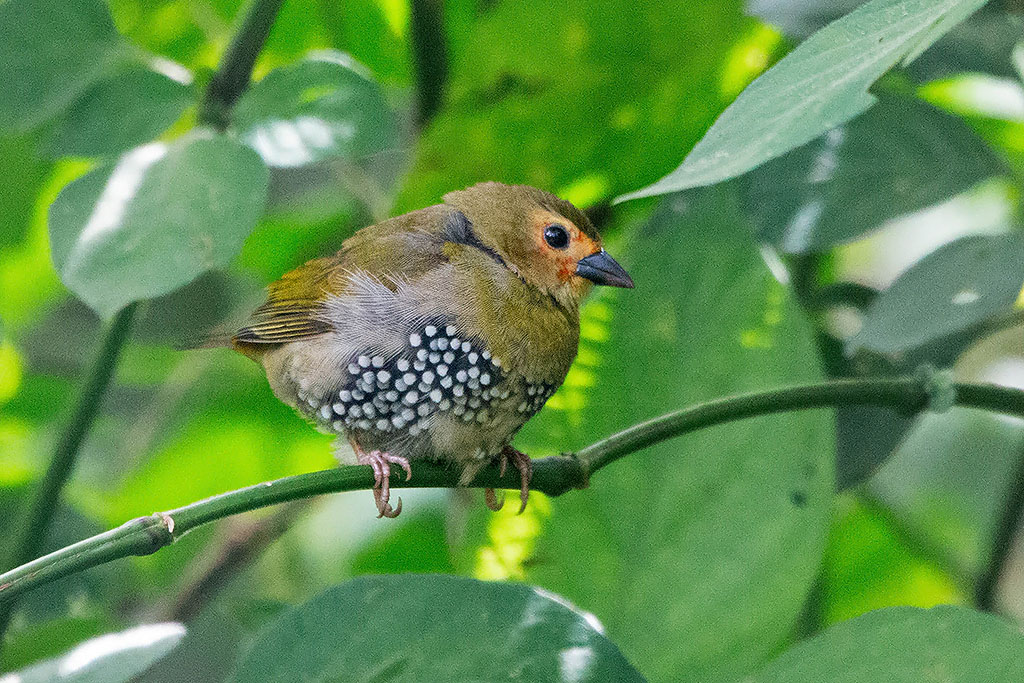
At the start of the trip my life list for Southern Africa was on 591. My goal for the trip was to reach 600. And I did so with the Rudd’s Apalis.
But lifer #601 was the real star of the show. We heard him call nearby. After a bit of searching and a bit of bundu bashing, Ian told me to look up. My breath left my body.

A bit more bundu bashing and we could see him from the front. I have seen photos like this, but the reality of this bird is so much better. It was one of those moments that will remain in my memory forever.
My life list increased with a Brown-throated Weaver at the bridge.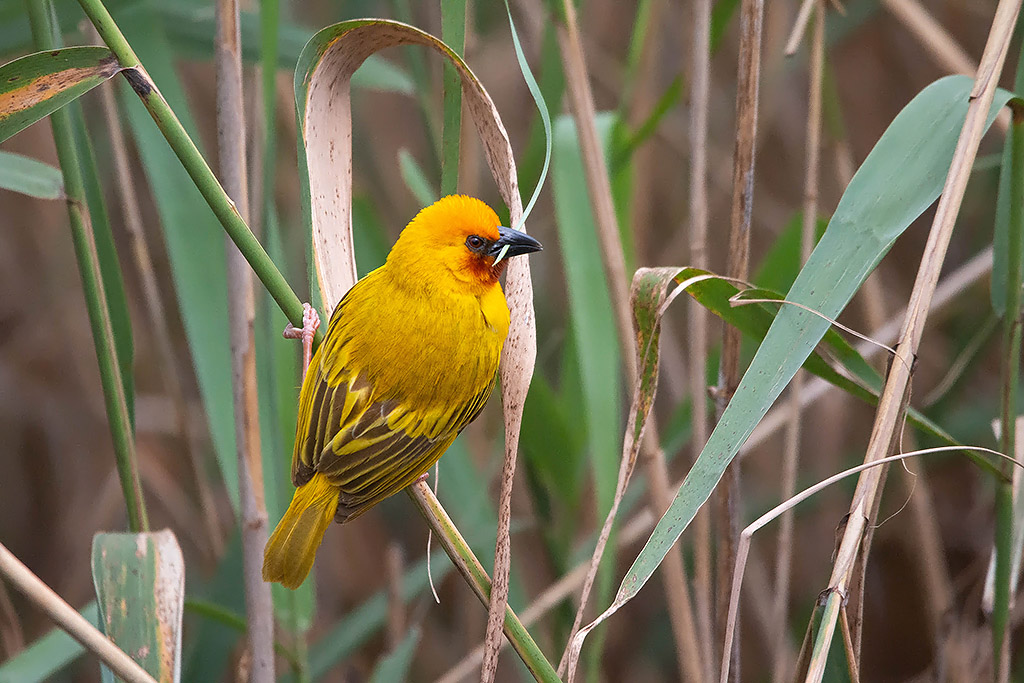 We found a bird party in full swing. It was something to behold. Lots of Green Twinspots, Red-backed Mannikins, Black-bellied Starlings and a small flock of very busy Grey Waxbills. I only managed some bad record pics of these pretty little birds.
We found a bird party in full swing. It was something to behold. Lots of Green Twinspots, Red-backed Mannikins, Black-bellied Starlings and a small flock of very busy Grey Waxbills. I only managed some bad record pics of these pretty little birds.
I was happy to see a Broad-billed Roller, my first sighting of this beautiful bird in a long time.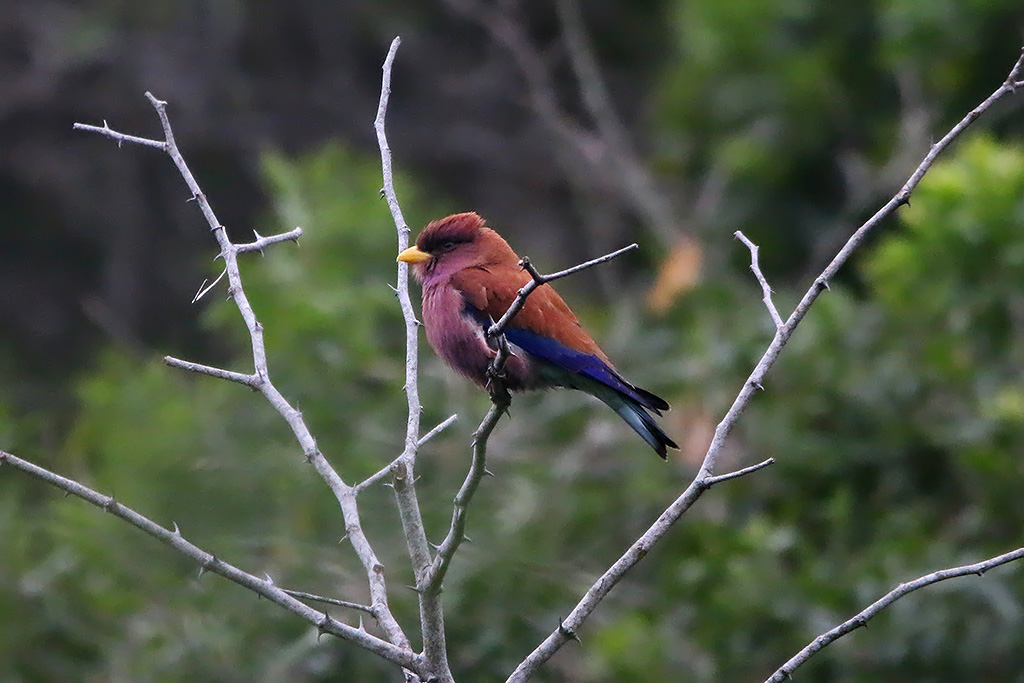 We spotted movement in a tree – it was another Green Malkoha! Not the same great sighting as the first time, but I managed a photo – at least you can see its beak!
We spotted movement in a tree – it was another Green Malkoha! Not the same great sighting as the first time, but I managed a photo – at least you can see its beak!
We walked to a little wetland where we saw Red-breasted Swallows, Pygmy Geese, Black Crakes, African Jacanas, White-backed and Yellow-billed Ducks, Yellow-throated Longclaws and many more. My last lifer for the day was a Croaking Cisticola.
Birding in St Lucia was everything I had hoped for and more. Despite the rain, it was an incredible few days.
Isimangaliso Wetland Park
I visited the Eastern Shores of iSimangaliso Wetland Park on Sunday and Monday. There was a tar road that ran the length of the park and that was my preference after the heavy rains.
It is a beautiful area, I just whish I could have seen it in better weather conditions.
I saw a few mammal species. These included Elephants, Buffalo, Kudu, Waterbuck and Common Reedbuck.


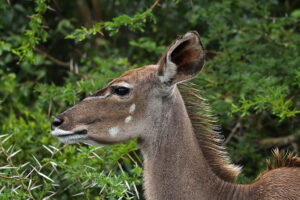

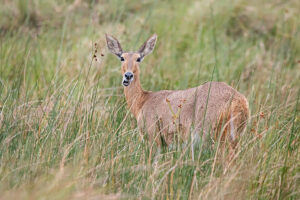
The birding on both days was good, despite the weather. A Hamerkop looked a little lost.
The rainy weather did not detract from the incredible views.
On the first day I drove all the way to Cape Vidal. The rain stopped long enough for me to jog to the beach and back.
I stopped at the Mission Rocks lookout point on both days. The first time it was raining quite a bit, on the second day is was slightly better.

I walked to one of the decks at Mission Rocks. The view over the Park was endless. I also saw the only hippo of the trip.
Birding in the Park was quite good. I can only imagine what it would be like if the weather was better! Some of the more common birds included a Wattled Lapwing and a pair of African Pipits.
I saw a Saddle-billed Stork on both days.
There was a lot of water in the Park, and there were birds in almost all of the ponds I had great sightings of White-backed Ducks.
I also saw a Squacco Heron. Apparently the Lesser Moorhen is not a common bird for the area and I was lucky to see two.
On the first day I saw lots of ponds with water lilies and scanned them for Pygmy Geese. I finally sat them on the second visit when the weather was better. I’ve only seen these adorable little Geese once before, and this sighting was so much better than the first!
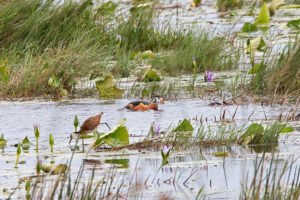

With the better weather on the second day the small creatures came out. I lifted a log and found a Lesser Blue Leg Centipede. 
One of the things about the rainy weather that I regretted the most was the fact that so few butterflies were out and about. But the warmer weather did bring out a few, and it included a lifer in the form of a Purple Brown Hairstreak. 
There was also a Round-winged Orange Tip. 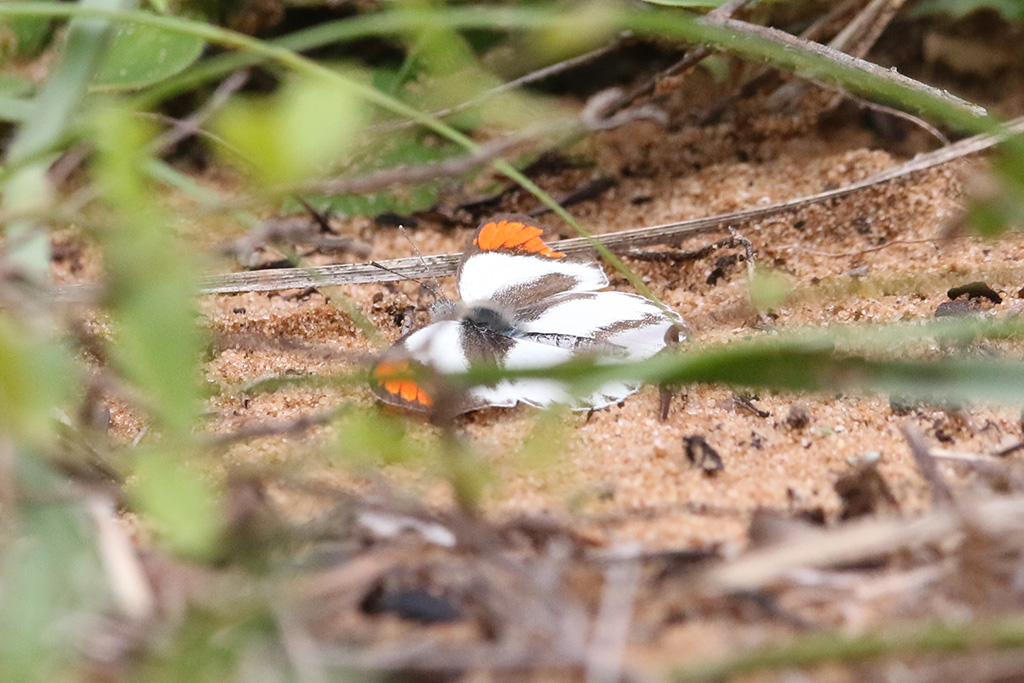
I had hoped to find a specific Raptor, but it was not to be. I did however see a Black-chested Snake Eagle.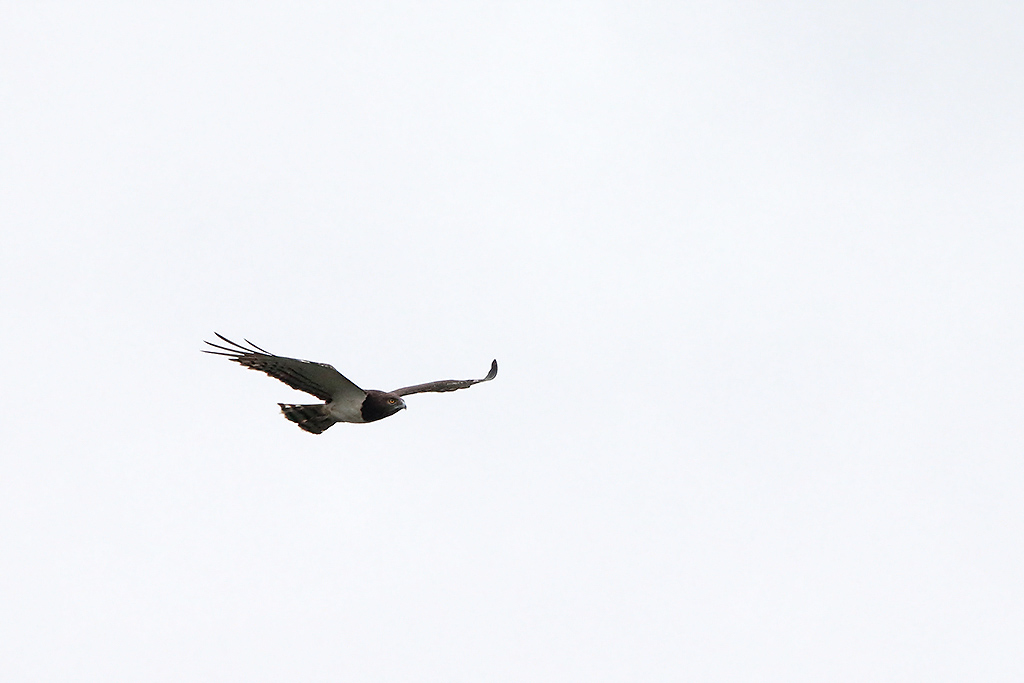
iSimangaliso is a fantastic Park. I will definitely have to come back when the weather is better!
Hluhluwe-iMfolozi Reserve
It was raining hard again when I left St Lucia on Tuesday. I was driving to Richard’s Bay and decided to do so via Hluhluwe-iMfolozi Park. Visiting “Shloe-Shloe”was a standing joke between me and some colleagues from the Umhlanga office, and I was rather excited to finally visit this Park. I hoped the rain would stop or lessen by the time I got there. It did not.
The first animals I saw were a lone Elephant bull, Zebras and Impalas.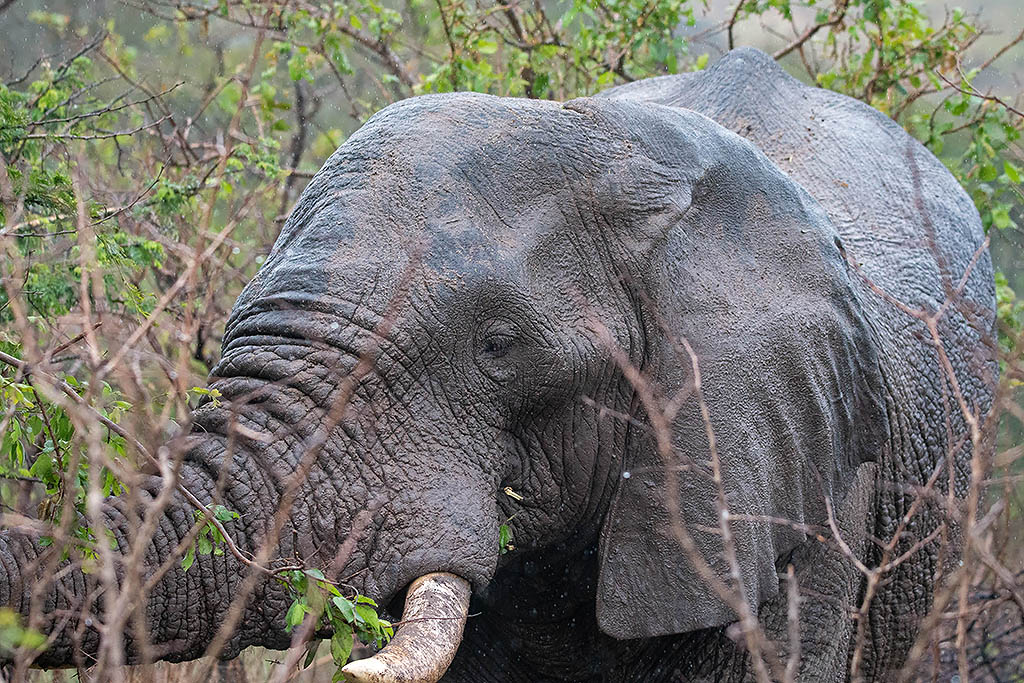


Despite the rain I could still appreciate the views.
I saw one lone buffalo and a few Blue Wildebeest.
There were some splashes of colour in the gloomy, rainy environment. I loved these Ground Lilies and Blood Lilies.

Despite the rain there were quite a few birds out and about. I liked this White-throated Robin-chat.
Some of the birds were very wet, as was the case with this Yellow-billed Kite.
Other birds I saw were Burchell’s Coucals, Hamerkop, Emerald-spotted Wood Dove and a Wahlberg’s Eagle.
There was a family of African Hoopoos with a cute youngster. A big grey shape caught my eye.
A big grey shape caught my eye.
At one of the pans I saw a Wooly-necked Stork and a little further a few Crested Guineafowl.
I stopped at one of the bird hides. There was a small pond with a pretty little waterfall. 
The Lesser-striped Swallows were clever and hid from the rain below the rocks of the waterfall.
The intensity of the rain increased. This impala did not seem to bothered.
At times the visibility was not great.
I drove to the iSimangaliso part of the Park. There were fewer animals and birds, probably because the rain had increased again. But I saw some wonderful animals, like this delightful roadblock.

There were a few birds – a rather wet-looking Burchell’s Coucal, Yellow-throated Longclaw and some Crested Francolins.
My second last lifer of the trip came in the form of a Pale Flycatcher.
Just before crossing back to the Hluhluwe section I found a group of five Nyala bulls.
With more time and better weather one can explore more of the gravel roads in the Park. I think it would be awesome. But the rainy weather did not ruin my visit (too much) and I was quite happy with my first visit to “Shloe=Shloe”!

